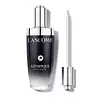What's inside
What's inside
 Key Ingredients
Key Ingredients

 Benefits
Benefits

 Concerns
Concerns

No concerns
 Ingredients Side-by-side
Ingredients Side-by-side

Water
Skin ConditioningBifida Ferment Lysate
Skin ConditioningGlycerin
HumectantPentylene Glycol
Skin ConditioningPolymnia Sonchifolia Root Juice
Skin ConditioningDimethicone
EmollientAlpha-Glucan Oligosaccharide
CleansingSodium Carboxymethyl Beta-Glucan
CleansingSodium Hyaluronate
HumectantSalicyloyl Phytosphingosine
Skin ConditioningAdenosine
Skin ConditioningMannose
HumectantAmmonium Polyacryloyldimethyl Taurate
Emulsion StabilisingDipotassium Glycyrrhizate
HumectantHydroxyacetophenone
AntioxidantCaprylyl Glycol
EmollientTetrasodium Glutamate Diacetate
Citric Acid
BufferingLactic Acid
BufferingLactobacillus
Skin ConditioningAcetic Acid
BufferingMaltodextrin
AbsorbentXanthan Gum
EmulsifyingFaex Extract
Skin ConditioningOctyldodecanol
EmollientButylene Glycol
HumectantSodium Benzoate
MaskingParfum
MaskingWater, Bifida Ferment Lysate, Glycerin, Pentylene Glycol, Polymnia Sonchifolia Root Juice, Dimethicone, Alpha-Glucan Oligosaccharide, Sodium Carboxymethyl Beta-Glucan, Sodium Hyaluronate, Salicyloyl Phytosphingosine, Adenosine, Mannose, Ammonium Polyacryloyldimethyl Taurate, Dipotassium Glycyrrhizate, Hydroxyacetophenone, Caprylyl Glycol, Tetrasodium Glutamate Diacetate, Citric Acid, Lactic Acid, Lactobacillus, Acetic Acid, Maltodextrin, Xanthan Gum, Faex Extract, Octyldodecanol, Butylene Glycol, Sodium Benzoate, Parfum
Bifida Ferment Lysate
Skin ConditioningDipropylene Glycol
HumectantNiacinamide
SmoothingGlycerin
HumectantLactobacillus/Pumpkin Ferment Extract
Skin ConditioningLactobacillus/Soybean Ferment Extract
Skin ConditioningRice Ferment Filtrate
Skin ConditioningSodium Hyaluronate
HumectantHydrolyzed Collagen
EmollientSalix Alba Bark Extract
AstringentOriganum Vulgare Leaf Extract
Skin ConditioningCinnamomum Zeylanicum Bark Extract
AntimicrobialPortulaca Oleracea Extract
Skin ConditioningChamaecyparis Obtusa Leaf Extract
Skin ConditioningBeta-Glucan
Skin ConditioningPalmitoyl Oligopeptide
CleansingCopper Tripeptide-1
Skin ConditioningAcetyl Hexapeptide-8
HumectantAllantoin
Skin ConditioningHydroxyethylcellulose
Emulsion StabilisingPanthenol
Skin ConditioningCarbomer
Emulsion StabilisingArginine
MaskingButylene Glycol
HumectantScutellaria Baicalensis Root Extract
AstringentIllicium Verum Fruit Extract
PerfumingAdenosine
Skin Conditioning1,2-Hexanediol
Skin ConditioningDisodium EDTA
Bifida Ferment Lysate, Dipropylene Glycol, Niacinamide, Glycerin, Lactobacillus/Pumpkin Ferment Extract, Lactobacillus/Soybean Ferment Extract, Rice Ferment Filtrate, Sodium Hyaluronate, Hydrolyzed Collagen, Salix Alba Bark Extract, Origanum Vulgare Leaf Extract, Cinnamomum Zeylanicum Bark Extract, Portulaca Oleracea Extract, Chamaecyparis Obtusa Leaf Extract, Beta-Glucan, Palmitoyl Oligopeptide, Copper Tripeptide-1, Acetyl Hexapeptide-8, Allantoin, Hydroxyethylcellulose, Panthenol, Carbomer, Arginine, Butylene Glycol, Scutellaria Baicalensis Root Extract, Illicium Verum Fruit Extract, Adenosine, 1,2-Hexanediol, Disodium EDTA
 Reviews
Reviews

Ingredients Explained
These ingredients are found in both products.
Ingredients higher up in an ingredient list are typically present in a larger amount.
Adenosine is in every living organism. It is one of four components in nucleic acids that helps store our DNA.
Adenosine has many benefits when used. These benefits include hydrating the skin, smoothing skin, and reducing wrinkles. Once applied, adenosine increases collagen production. It also helps with improving firmness and tissue repair.
Studies have found adenosine may also help with wound healing.
In skincare products, Adenosine is usually derived from yeast.
Learn more about AdenosineBifida Ferment Lysate is derived from the fermentation of Bifida bacteria (often with dairy). It is a probiotic and helps to strengthen our skin's microbiome.
Having a healthy microbiome helps protect our skin against infection. It also helps our skin stay hydrated and healthy.
Studies also show this ingredient to be a promising soothing ingredient for sensitive skin.
Learn more about Bifida Ferment LysateButylene Glycol (or BG) is used within cosmetic products for a few different reasons:
Overall, Butylene Glycol is a safe and well-rounded ingredient that works well with other ingredients.
Though this ingredient works well with most skin types, some people with sensitive skin may experience a reaction such as allergic rashes, closed comedones, or itchiness.
Learn more about Butylene GlycolGlycerin is already naturally found in your skin. It helps moisturize and protect your skin.
A study from 2016 found glycerin to be more effective as a humectant than AHAs and hyaluronic acid.
As a humectant, it helps the skin stay hydrated by pulling moisture to your skin. The low molecular weight of glycerin allows it to pull moisture into the deeper layers of your skin.
Hydrated skin improves your skin barrier; Your skin barrier helps protect against irritants and bacteria.
Glycerin has also been found to have antimicrobial and antiviral properties. Due to these properties, glycerin is often used in wound and burn treatments.
In cosmetics, glycerin is usually derived from plants such as soybean or palm. However, it can also be sourced from animals, such as tallow or animal fat.
This ingredient is organic, colorless, odorless, and non-toxic.
Glycerin is the name for this ingredient in American English. British English uses Glycerol/Glycerine.
Learn more about GlycerinSodium Hyaluronate is hyaluronic acid's salt form. It is commonly derived from the sodium salt of hyaluronic acid.
Like hyaluronic acid, it is great at holding water and acts as a humectant. This makes it a great skin hydrating ingredient.
Sodium Hyaluronate is naturally occurring in our bodies and is mostly found in eye fluid and joints.
These are some other common types of Hyaluronic Acid:
Learn more about Sodium Hyaluronate